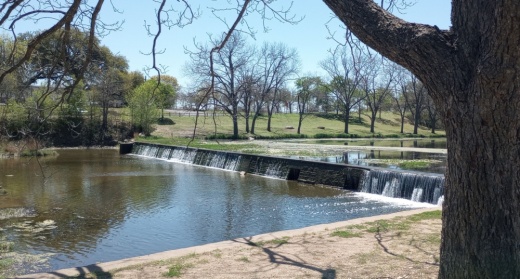According to a 2022 report compiled by the Outdoor Foundation and Recreational Boating and Fishing Foundation, nearly 5 million more people fished at least once in the United States in 2020 versus 2019.
Though not quite as popular as in 2020, 2021 still saw 2.3 million more people than 2019.
There is no shortage of nearby fisheries for residents looking to try out a new pastime or test the angling skills they picked up during the pandemic. Those looking for a family outing will find plenty of fishing spots with facilities and short walks to the water.
State parks, city parks, creeks and lakes all offer opportunities to catch a variety of fish species.
As Central Texas cools down for the rest of the year, many fish species will become more aggressive in their feeding habits, and the chance to have a good catch will pick up.
WHERE TO FISH LOCALLY
1. Devine Lake
1807 Waterfall Drive, Leander
Cost: free
Feature: picnic area and trails
2. Lakewood Lake
2040 Artesian Springs Crossing, Leander
Cost: free
Feature: fishing pier, kayak and paddleboard rental
3. Shirley McDonald Park Pond
4390 Brushy Creek Road, Round Rock
Cost: free
Feature: duck pond, channel catfish and perch spot
4. Berry Springs Mill Pond
1801 CR 152, Georgetown
Cost: $50 for annual park pass
Feature: firepit, amphitheater and donkeys that can be pet
5. San Gabriel Park
445 E. Morrow St., Georgetown
Cost: free
Feature: pavilions, walking trails, family friendly
6. Blue Hole Park Lake
100 Blue Hole Park, Georgetown
Cost: free
Feature: scenic views, picnic area
WHAT CAN YOU CATCH LOCALLY?
Largemouth bass | spotted bass | guadalupe bass
Common in Central Texas waters, some bass can grow to more than 10 pounds depending on the body of water. The Guadalupe bass, a rare species and state fish of Texas, can be caught in some local waters. Bass can be caught with various artificial lures and live bait, such as worms and crickets.
Carp
These hard-fighting fish can be spotted in some Austin area waterways. They are mostly vegetarian—canned corn is a popular bait choice. A 44-pound common carp was caught at Lady Bird Lake in 2021, according to the TPWD. In partnership with the TPWD, the city of Austin has released tens of thousands of sterile grass carp into Lake Austin to control the aquatic vegetation hydrilla.
Bluegill and other panfish (e.g. Pumpkinseed, Redear Sunfish, Crappie)
These are abundant in ponds, creeks, rivers and lakes across Central Texas. Panfish angling is an ideal activity for children as the fish are small enough to be caught using light equipment. Artificial grubs and worms on a jig, live worms and small pieces of sandwich bread are effective baits.
Catfish
They can be found at many Austin area fisheries. Channel, blue and flathead catfish are the main species caught. Catfish are generally caught using baits with strong odors such as chicken livers, dead sunfish or hot dogs. The TPWD record for the largest blue catfish caught at Lake Walter E. Long was set in 2002 when an angler brought in a 60-pounder.
GETTING A LICENSE TO FISH
Fishing licenses are required for anglers age 17 and older to fish public waters in Texas with a few exceptions. Licenses are not required to fish in state parks.
The cost of a license depends on state residency status, freshwater or saltwater, and the duration of term. For example, an annual freshwater fishing license is $30 and valid from purchase to Aug. 31. A one-day license for any type of water is $11 for Texas residents.
License regulations can be found at www.tpwd.texas.gov/regulations/outdoor-annual/licenses. Purchasing a license can be done online or in person at participating retailers.
WHAT'S IN YOUR TACKLE BOX?
Make sure to include a weight on a catfish rig to sink baits to the bottom where catfish like to dwell. Tie on a circle hook so catching the corner of its mouth is simple.
Hollow-body frog lures float and are ideal for eliciting acrobatic, leaping bites from bass. Make sure to work the lure on top of water lilies and surface vegetation.
Soft-plastic lures come in countless shapes and sizes. Meant to imitate bait fish or crawfish or bugs, plastics will catch all types of sunfish and bass.
Crankbaits wobble underwater as they are retrieved. Running the lure into rocks and making a commotion attracts reaction strikes from bass.
Jigs come in various forms, and picking the most effective type depends on the water temperature, water visibility, type of bait fish present, underwater structure and other factors.






